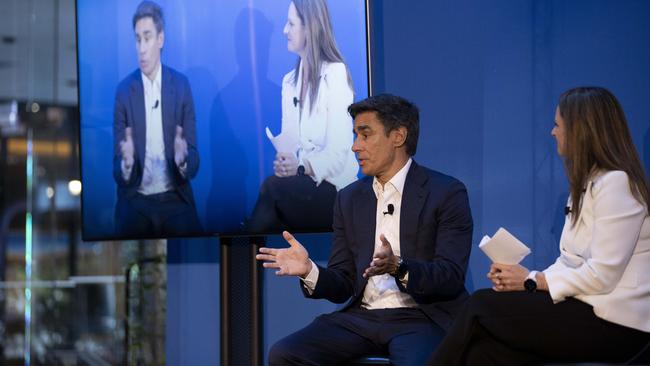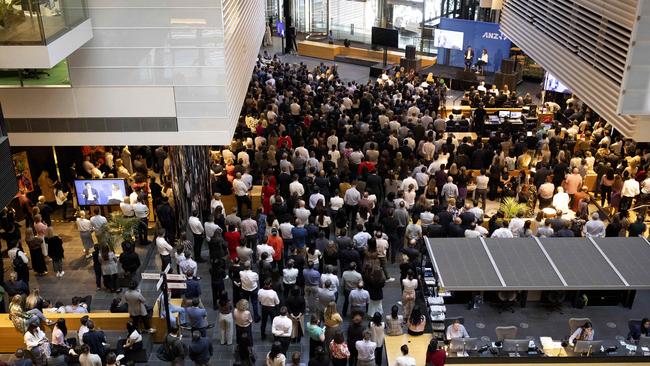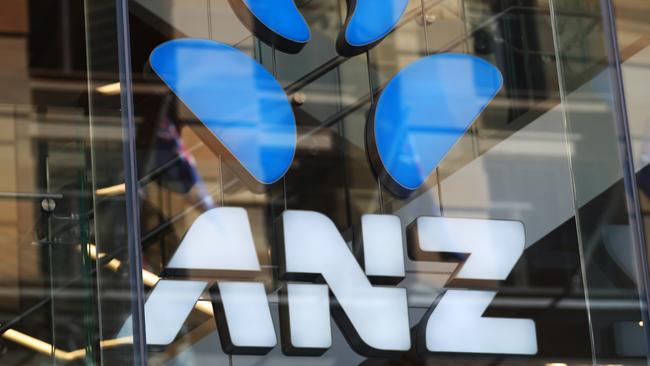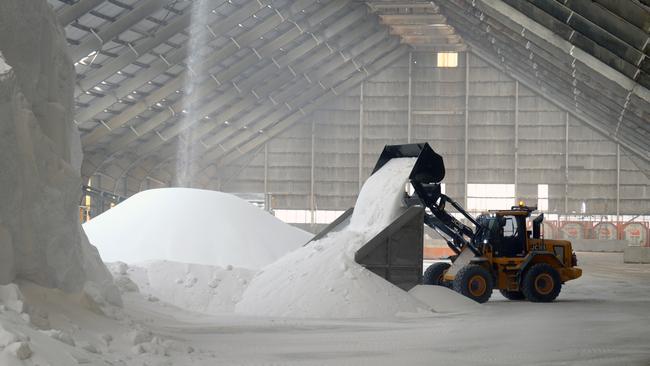ANZ CEO Nuno Matos sends staff memo on risk and culture on first day in top job
The new boss of ANZ has issued three immediate priorities, telling staff there will be no shortcuts as he strives for a ‘high performance, winning’ culture.

Nuno Matos has a simple message for ANZ’s staff: no shortcuts.
The Portuguese-born former HSBC banker burst out of the blocks on his first day as chief executive, outlining his vision for ANZ to be high-performing, winning and confident, with risk management and compliance at its core. A highly-experienced and ambitious global banker, Matos left staff in no doubt what his expectations were and where his immediate priorities lay.
“I want ANZ to continue to do great things, and we won’t commit to less,” he told staff.
“We will drive forward with full clarity. We will hold each other accountable on delivery. We will challenge with respect.
“I want us to aspire to become the most trusted and admired bank in Australia and New Zealand, and the leading Institutional bank in Asia Pacific, delivering on our purpose along with best-in-class returns to our shareholders.”

Matos was following the rule that day one for any new chief executive is the most powerful day to get the message across.
There’s a small window when a new boss has the attention and support of the entire organisation at the same time, and that power and influence diminishes over time – especially in a big, complex bank spread across several countries.
Matos’s performance will be judged on his ability to get things done in a bank where delivery has stalled. Being an outsider will help bring clarity to what needs to be done. However, it also points to a period of expected upheaval as Matos installs his own people at the top.
In a day packed with optics, one of Matos’s first meetings at ANZ’s sprawling Melbourne headquarters was with senior executives steering improvements around non-financial risks.
This was a nod to the bank’s lingering problems around culture which has put it on the wrong side of regulators.
He was then whisked up-town to meet with staff in the flagship Bourke Street branch. Then it was back to Docklands to address a town-hall meeting.
Matos was picked by chairman Paul O'Sullivan late last year. He takes charge from Shayne Elliott who stepped down last Friday just short of 10 years in the top job.
Where Elliott was all about simplification and repositioning, Matos’s early tenure will be about execution.
The former Hong Kong-based retail banking executive was last year regarded as the leading internal contender to take the top job at HSBC but was passed over for Georges Elhedery.

A former central banker who also worked for two decades with Spain’s Santander, Matos brings a wealth of experience to ANZ.
He is a highly-connected banker who has worked across three continents, including a stint cleaning up HSBC’s troubled Mexican business.
The test for Matos will be adjusting from a globally complex bank to a relatively modest bank on the global stage.
He comes to ANZ just as the lender is digesting the acquisition of Suncorp bank and is in the middle of rolling out its tech transformation including its long-promised ANZ Plus retail banking platform.
While the bulk of the tech rebuild is done, ANZ is about to migrate 1.3 million Suncorp customers on to the new ANZ Plus tech platform and then some 600,000 small businesses.
Following that is the big one – six million legacy ANZ customers. Then there’s another big project quietly under way in New Zealand, which involves moving a further two million customers on to a cloud-based system over coming years. The potential disruption across the bank’s entire customer base makes it extremely vulnerable.
This needs to come as the bank rebuilds bridges with regulators. That’s why execution will be key to Matos’s success.
The bank also finds itself battling with a string of regulatory skirmishes around non-financial risk and culture, forcing it to carry an additional $1bn in capital as a penalty.
Matos told staff that while he is starting with ANZ in a position of strength “there is more work to be done”, particularly around improving non-financial risk and its capability around delivering on projects.
He also outlined a plan for ANZ to lift customer service and wants the bank that has long underperformed in this space to provide the best experience to customers.
This will see it take on market leader Commonwealth Bank and more recently Westpac where new chief Anthony Miller also called out a plan to win customer satisfaction.
Matos on Monday issued three “immediate priorities”, and these tackle the bank’s top three weak points head on.
The first involves developing a “high-performance, winning culture, with no shortcuts from a value and behaviours perspective”.
This means the bank “will win the preference of our customers, the investment of our shareholders, the excitement of our people and the respect of society and regulators”.
Secondly, he wants to speed up the pace of delivery of projects in the organisation, including the ANZ Plus and Suncorp Bank integration. “This will change,” Matos said.
Finally, he intends to step up ANZ’s risk management and approach. “You can be assured that improving risk management is one of my key priorities.”
Pivot for Ridley
Ridley chief Quinton Hildebrand has used the three-year run-up in the shares of the agribusiness player to corner Australia’s fertiliser market in a single stroke, without the cost attached to manufacturing.
Although Ridley’s $375m move on Dyno’s unwanted Incitec Pivot arm is not entirely risk-free.
It’s still a big bite for the Ridley balance sheet as it delivers agribusiness into an adjacent market. There’s also near-term supply risk as Dyno attempts to phase down Incitec’s local manufacturing operations at Phosphate Hill.
But shareholders have faith in Hildebrand given the steady transformation he has delivered to Ridley.
Indeed, Ridley has picked up a bargain. Dyno (recently renamed from Incitec) has been a very willing seller as it wanted to exit the more energy intensive fertilisers to focus on building out its global explosives operations.
And as my colleague Bridget Carter writes, Ridley has been eyeing the Incitec business for years, including when it was last shopped around for more than $1bn – although that’s when it had fuller manufacturing.
Dyno has already absorbed the cost of winding down localised manufacturing and mulls what to do with the remaining Phosphate Hill manufacturing business.
If Dyno can’t sell Phosphate Hill, Ridley will then have to go to global markets to secure supply, potentially putting it at great risk of swings in energy prices and freight premium.

Incitec is by far the biggest fertiliser player, with a 46 per cent market share. It’s 2.4 times the size of the next operator, giving Ridley an immediate boost.
Ridley takes on a new layer of commodity risk, however agriculture and energy is an exposure it has managed for years.
The key to the deal is the 10-year offtake from the $6bn Perdaman urea facility being built on the Burrup Peninsula.
This is expected to start ramping up from 2028 and will give pricing parity with Middle East producers, but the lower-cost shipping advantage and certainty of supply will be significant.
Ridley has tapped shareholders $125m to help fund the deal, it’s also planning $50m in vendor notes issued by Dyno. It is understood the institutional offer was well-supported.
At the same time, it upped its debt facility with ANZ and Westpac to $350m. Even after the deal, Ridley’s debt will be a manageable 1.3 times annual earnings.
Hildebrand’s plan of attack since taking charge of Ridley in 2019 was to remove surplus manufacturing capacity across the feed mills, reduce costs and grow market share from an improved competitive offering. This has helped steadily improve returns.
The former Mackay sugar boss hoping to use the same playbook with Incitec.
Hildebrand is betting Incitec was overlooked for investment inside Dyno with the main game there being the global explosives business.
Even after the deal and cost synergies, Hildebrand reckons Ridley will have capacity to invest where he suspects he can lower costs and attack prices.
He’ll have time for this project. The Ridley board, led by former APA boss Mick McMahon, recently locked Hildebrand in for another three years.






To join the conversation, please log in. Don't have an account? Register
Join the conversation, you are commenting as Logout